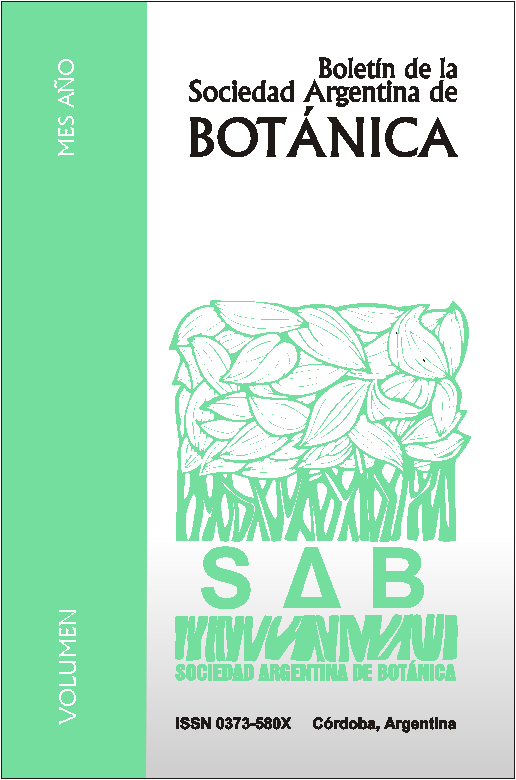Role of the corona in Passiflora caerulea (Passifloraceae) as attractant to their pollinators.
DOI:
https://doi.org/10.31055/1851.2372.v51.n1.14420Keywords:
Passiflora caerulea, corona, secondary attractants, visual function, odorant function, pollination.Abstract
Role of the corona in Passiflora caerulea (Passifloraceae) as attractant to their pollinators. Passiflora caerulea L. flowers, like those of many other zoophilic species, offer nectar as reward to their pollinators as a primary attractant. This species has developed stimuli or secondary attractants that announce the presence of primary one (i.e. the nectar) and ensure repeated visits from their pollination vectors optimizing reproduction. The corona, a characteristic structure of the Passifloraceae family, has been reported for P. caerulea as the organ that produces visual and olfactory stimuli on their pollinators. By preference experiments, nullifying either one or both functions, the importance of each one in attracting pollinators was evaluated. The suppression of functions, individually and together, produced a significant decrease in the number of visits compared to the controls. Thus, the importance of visual and odorant functions was verified; greater efficacy was recorded for the last one in the frequency of visits. Additionally, the volatile compounds produced by the flowers were identified, some of which were produced by the perianth and not by the corona, as was expected.Downloads
Published
Issue
Section
License
Provides immediate and free OPEN ACCESS to its content under the principle of making research freely available to the public, which fosters a greater exchange of global knowledge, allowing authors to maintain their copyright without restrictions.
Material published in Bol. Soc. Argent. Bot. is distributed under a Creative Commons Attribution-NonCommercial-ShareAlike 4.0 International license.





